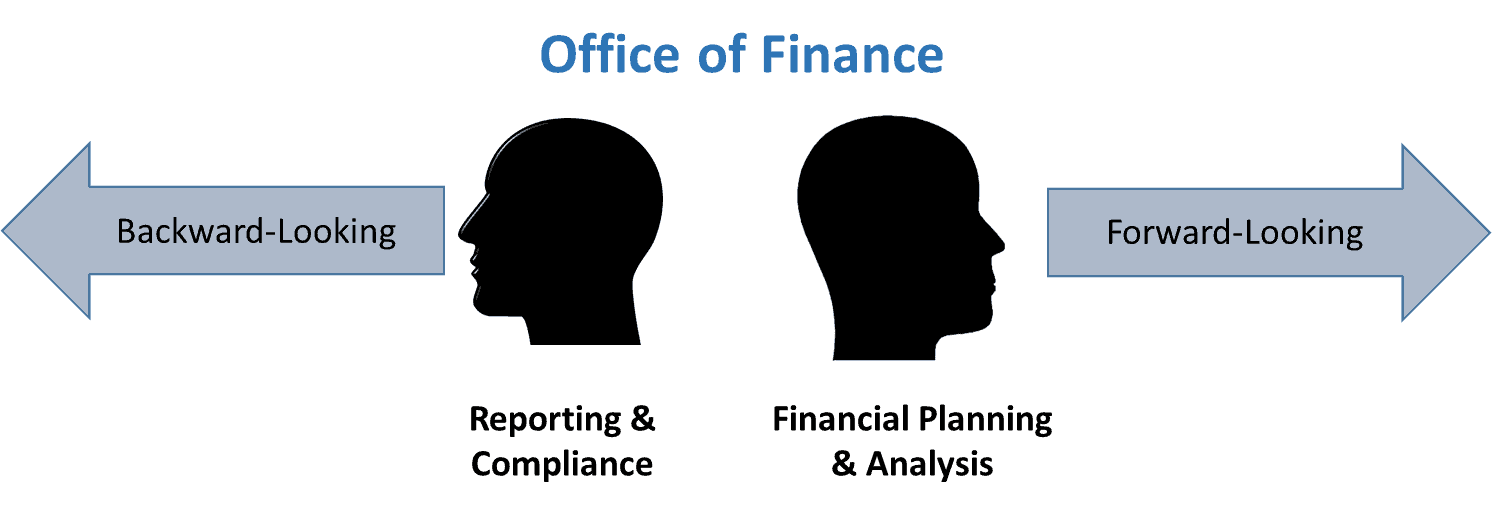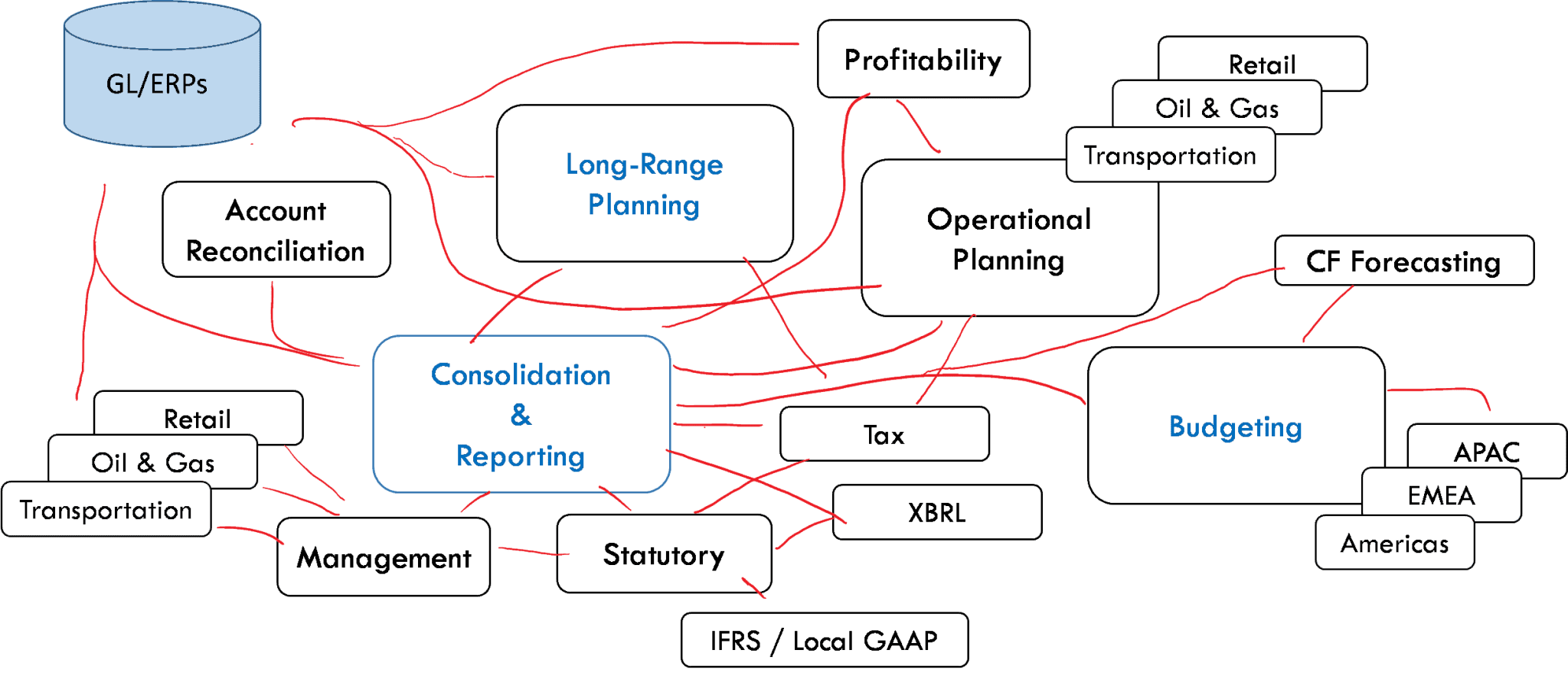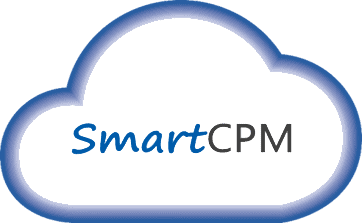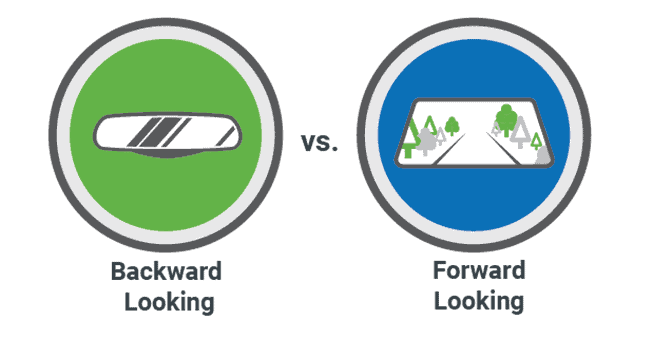In larger enterprises there are often separate functions within Finance for financial reporting and compliance vs. more forward-looking financial planning and analysis (FP&A). And in many Finance organizations there are separate software applications for financial reporting vs. FP&A. However, more enlightened Finance organization are implementing unified corporate performance management (CPM) platforms that align financial reporting and compliance with planning and forecasting – read on to learn about the advantages of this approach.
The Science of Reporting vs. the Art of Planning
In the world of corporate finance departments running under the CFO, there are often separate functions for historical accounting, reporting and compliance (science) vs. the “art” of forward-looking financial planning and analysis (FP&A).
The accounting group is focused on ensuring accurate transaction processing and reporting of financial results, and complying with SOX, SEC, IRS and other regulatory guidelines. The compliance aspect of this relies on providing a high degree of controls, segregation of duties, and detailed audit trails. And what makes this more of a “science” is that the consolidation process is 95% the same for most companies: currency conversions, intercompany eliminations, accounting for partial ownerships, performing account reconciliations and reporting results.
Conversely, the FP&A team is more forward-looking, helping the CFO and executive team develop long-term financial plans, managing the annual budget and periodic forecasting processes to help optimize resource allocations. FP&A is also usually tasked with management reporting – providing executives and managers with timely insights into financial and operating results and helping them to make informed decisions about the business. And what makes this more of an “art” is that planning is totally variable and unique. Each business plans revenue, capital, margins, people and operating units very differently.

Given the different perspectives of these two groups – science vs art, backwards vs. forward-looking – many large enterprises have implemented separate software applications for financial consolidation and reporting vs. FP&A. And sometimes these systems are provided by different software vendors and are totally incompatible.
The Challenges of Fragmentation
One of the reasons for this fragmented approach to financial systems has been dictated by the software solutions offered by legacy CPM software vendors. Due to the differing requirements of each group, and the perceived difficulty aligning these requirements, the historic approach has been to offer purpose-built applications, that are part of a “loosely-integrated suite” of software products. And the limitations of historic software architectures (e.g. 16 or 32 bit processors, single-threading etc.) did limit the amount of data and dimensionality that could be supported in these systems.

While this “purpose-built”, fragmented approach may have maximized license revenue and services for legacy CPM software vendors, it has caused many headaches for customers. These headaches include:
- Multiple points of integration with ERP/GL systems
- Multiple versions of the truth with duplicated data
- Time and effort spent synchronizing data across CPM applications
- Multiple points of maintenance for meta data, user security etc.
- Challenges aligning actual financial results with financial budgets, plans and forecasts due to inconsistent metadata/rules between applications
- Risky, expensive, and disruptive systems upgrades
- Lack of agility to quickly update systems as your business changes.
As a result, organizations using multiple legacy CPM applications for reporting vs. FP&A end up spending a lot of time and costs moving data and managing systems, and that reduces the amount of time they can spend on analyzing information and helping management make informed decisions about the business.
Considering Common Requirements
If we look under the hood, there is more commonality than differences in financial reporting vs. FP&A. Sure, there is the need for more control, precision and audit trails in financial reporting – but there are also many common requirements across these two areas. This includes the following:
- Chart of Accounts – summarized at corporate and more detailed at line of business levels
- Organization Hierarchies – Financial, Legal, Management, Tax
- Currencies – Transactional, Functional, Reporting
- Time Periods/Frequency – Annual, Quarterly, Monthly, Weekly etc.
- Dimensionality – Financial and Operating dimensions such as product lines, channels, customer segments
- Scenarios – Actuals, Budget, Forecast
- Data Integration/Validation – Mostly from GLs, HR, CRM and other with validations and error checks
- Reporting & Analysis – Financial Statements, P&Ls, Management Books, Dashboards, Excel-based analysis
While there are some underlying differences in requirements across reporting vs. FP&A, at the end of the day – actually the month, quarter or year – there’s always the need to compare actual financial and operating results to the original budget, or to the latest forecast to assess performance. To accommodate this need, the data must be aligned, synchronized and accessible to users via standard reports, dashboards, and Excel for ad hoc analysis.
Furthermore, when the actuals reporting system is not designed to capture and support the same level of detail as the FP&A system, the data gets summarized and management loses visibility into the underlying detail. This can be troublesome when they are analyzing the root causes of variances between actuals and budgets or forecasts. But it no longer has to be this way.
Aligning Compliance and Performance with CPM 2.0 Solutions
Modern software architectures and design approaches have enabled a new generation of CPM solutions, sometimes referred to as CPM 2.0 solutions, that can overcome many of the pitfalls of legacy, CPM 1.0 solutions. This includes capabilities such as:
- Unified platform supporting multiple CPM processes
- Flexible deployment options – cloud, on-premise, hosted
- Seamless ERP integration
- Integrated analytics
- Support for 64-bit processors, in-memory computing, multi-threading
With a unified platform that supports multiple CPM solution processes such as financial consolidation, reporting, planning, and analysis organizations can align financial reporting and compliance with FP&A and overcome many of the challenges cited earlier with the fragmented CPM 1.0 approach.
OneStream XF – Taking CPM 2.0 to the Next Level
OneStream Software takes the notion of CPM 2.0 one step further – we call it SmartCPMTM. Our OneStream XF platform unifies and simplifies financial consolidation, planning, reporting, analytics and financial data quality for sophisticated organizations.
Deployed via the cloud or on-premise, OneStream is the first and only solution that delivers corporate  standards and controls, with the flexibility for business units to report and plan at additional levels of detail without impacting corporate standards – all through a single application. We call this unique capability Extensible Dimensionality®. With its unified architecture, OneStream XF eliminates risky integrations, validations, and reconciliations between multiple products, applications and modules.
standards and controls, with the flexibility for business units to report and plan at additional levels of detail without impacting corporate standards – all through a single application. We call this unique capability Extensible Dimensionality®. With its unified architecture, OneStream XF eliminates risky integrations, validations, and reconciliations between multiple products, applications and modules.
Another unique capability of OneStream is the XF MarketPlace. The OneStream XF MarketPlace features downloadable solutions that allow customers to easily extend the value of their CPM platform to meet the changing needs of Finance and Operations. Examples of OneStream XF MarketPlace solutions that are already available and in use by customers include People Planning, Capital Planning, Cash Planning, Account Reconciliations, Sales Planning and many others.
Customers who have deployed OneStream XF have achieved several benefits including:
- Easy migration from on-premise to cloud deployment
- Integrated actuals, budgets, forecasts, and plans
- Rapid deployment of new solutions
- Reduced costs of ownership
- Streamlined reporting and planning processes
- Improved accuracy of financial results, plans and forecasts
- More time for value-added analysis
Learn More
Although there are some unique requirements in financial reporting and compliance vs. FP&A, there are many common ones. The historic approach of maintaining separate systems for these functions is no longer necessary. Today’s modern, CPM 2.0 platforms allow organizations to align compliance and performance management in a single system, saving the Finance department time, effort and money. And more importantly, having a unified system that accommodates financial reporting and planning, at both corporate and operating levels gives managers the visibility and insight they need to make faster, and more informed decisions.
To learn more, check out our white paper titled “The Power of Extensible CPM Platform” or visit our customer testimonials and videos.
Get Started With a Personal Demo


